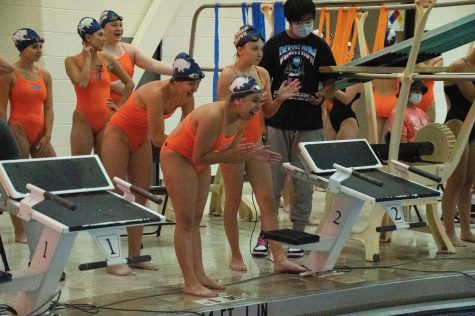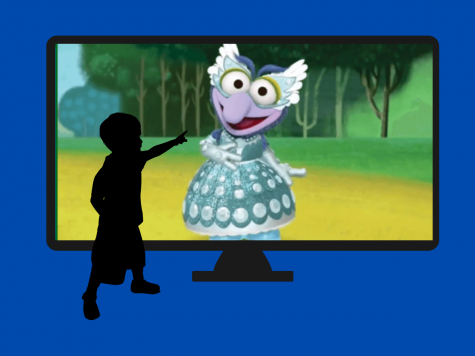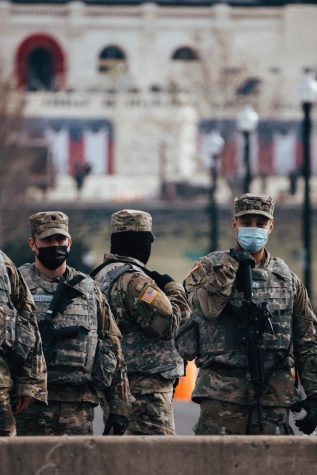Physical education classes warrant inclusion in GPA
BG has long offered various academic courses available for all interests. We offer a wide range of electives, from artistic to scientific, even culinary and courses in education.
However, we often overlook a required field of study that seemingly few of us care about. Physical Education is stereotypically an extorted trope of the entire American education system. It’s dramatized in movies, books and is often seen as a place where jocks thrive and everyone else suffers.
That is far from the truth. PE is an imperative part of our education that shouldn’t be taken for granted. However, D214 has long since decided that its grade only be a number in the grade book, and have no single ounce of influence on your GPA.
Unfortunately, many students are aware of PE’s exclusion from their GPA and opt not to participate in their class activities, turning a blind eye to the benefit of taking a portion of time out of their day to exercise. If one properly applies themselves, PE is a window to new opportunities and a token for the discovery of new passions.
“[PE] should count in your GPA because it’s a class you can choose to fit what you want,” senior Michael Lollino said. “You can easily get a good grade if you apply yourself.”
We should include PE in our GPA. It’s a great assessment of work ethic and responsibility that shows how willing a student is to work hard toward a goal or at the very least comply with basic instruction.
As a culture, we push aside the benefits that a proper physical education offers. Taken seriously, PE could educate students on the importance of maintaining fitness and why regular exercise is an important aspect of everyday life. It’s no surprise that our obesity rate has reached 36%, according to the CIA, considering that Illinois is only one of six states in the country that requires PE enrollment. Compare that to the UK’s 27%.
“I participate in gym because it’s a good time to take out of your day to work out,” junior Cameron Clark said. “I think it’s wrong that we don’t count our gym grade, it’s a good way to boost your GPA and to hold yourself accountable for the work you are putting in.”
Additionally, excluding PE in our GPAs is an insult to the teachers who have dedicated time and money in matters of physical education training. Not only are we telling students that PE is meaningless, but we are telling teachers that their jobs are as well.
“It marginalizes me. It makes people believe that it is unimportant,” physical education teacher Thomas Sullivan said. “[Students] then project it out toward me [and] toward the profession.”
According to Sullivan, the main belief behind excluding PE from GPAs is conventionally that it doesn’t provide students with an educational experience. However, I argue that it has the potential to teach students the importance of properly maintaining physical fitness and can help them achieve their physical goals. Goal achievement becomes even more prevalent when taking into account that BG offers multiple elective courses tailored to achieving different imperatives, such as Lifestyle PE, where students can customize their own workout in the fitness center, and Sports PE, where students can unwind and have fun with physical activity.
Additionally, keeping PE out of the realm of influential classes teaches students to not put forth effort in matters they consider of secondary importance. It creates a culture of conditional laziness that erodes the work ethic of most impressionable students, leaving them naturally lenient with anything that becomes their responsibility that they aren’t necessarily passionate in.
“It really shows a poor work ethic if you fail gym,” Lollino said. “It’s an easy class to have fun in without having to worry about keeping a grade in as much.”
According to the Illinois State Board of Education, every student must be enrolled in a PE class and be physically tested in the form of administered fitness tests. While some might think that this type of testing is discriminatory and unfair to students, it is important to keep in mind the tests aren’t to discourage or intimidate students in a way of getting them to improve physically.
“I think it has to be graded. Kids will often not dress because they don’t have to, which shows that they don’t value the time they have in the gym,” Clark said.
According to the ISBE, the tests are for students to identify their fitness levels and to better set goals throughout the school year. Additionally, they allow parents and schools to greater identify health trends within their region and how to address their systems of education.
Our PE program already has a set grading system heavily based off of participation. All that’s left to do is add its value to our GPAs to encourage students to take it seriously. We have classes in arithmetic and science that teach us problem solving, classes in communications, which teach us how to express ourselves verbally and classes in arts that teach us to use our creativity. Why can’t we also have a class that teaches us the importance of taking care of ourselves and our given responsibilities?
“There’s a pay-off to teaching PE. You see students who pay you tribute later on,” Sullivan said. “My philosophy is to just keep teaching, and some kids get it and others don’t.”



